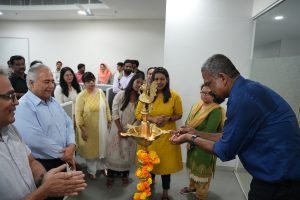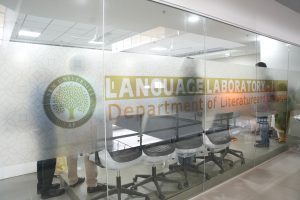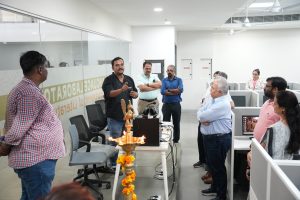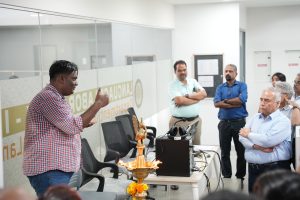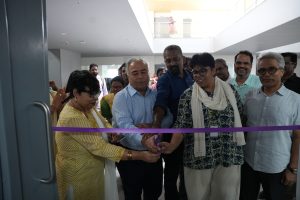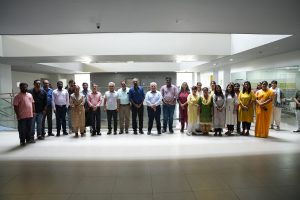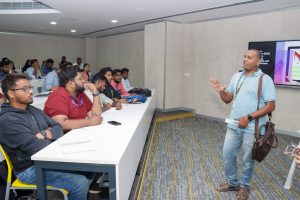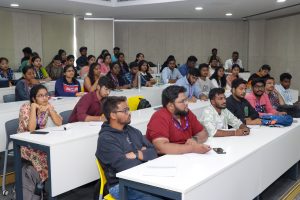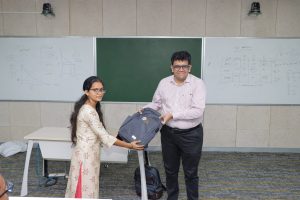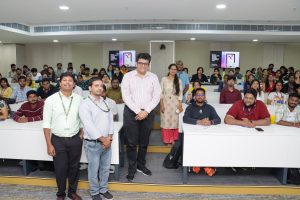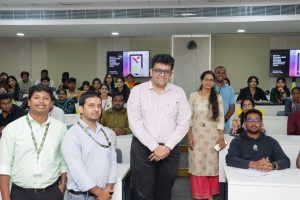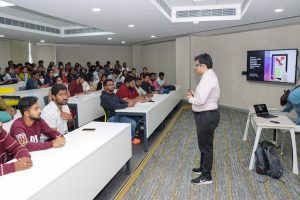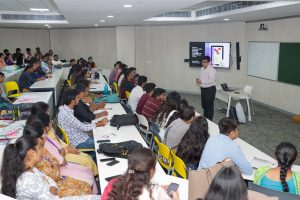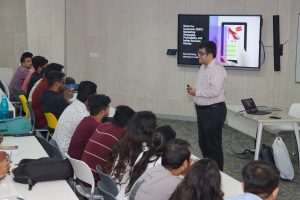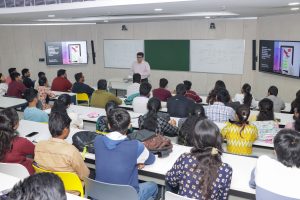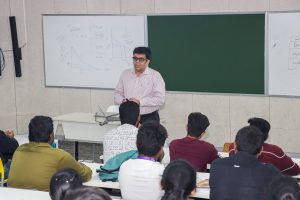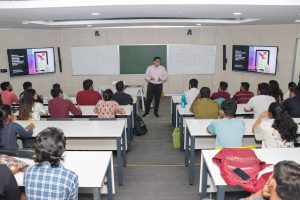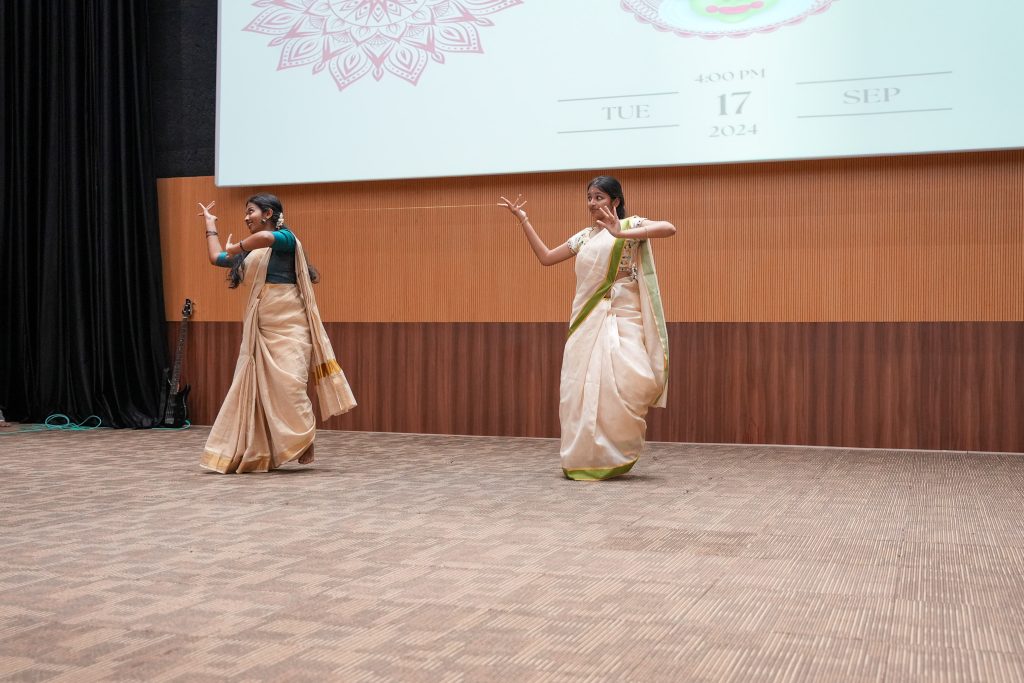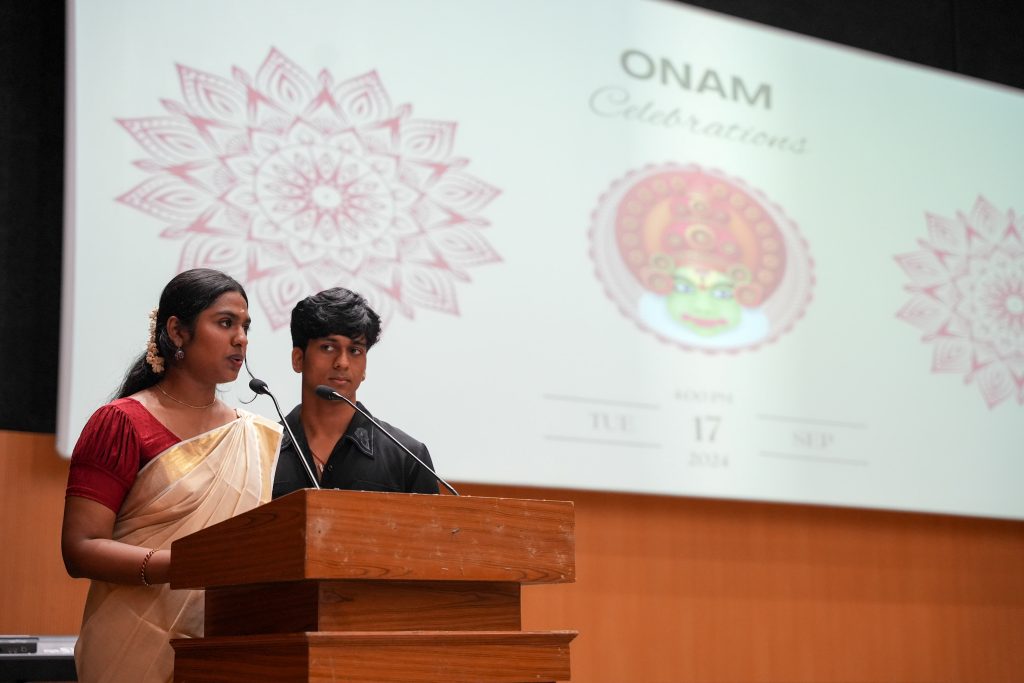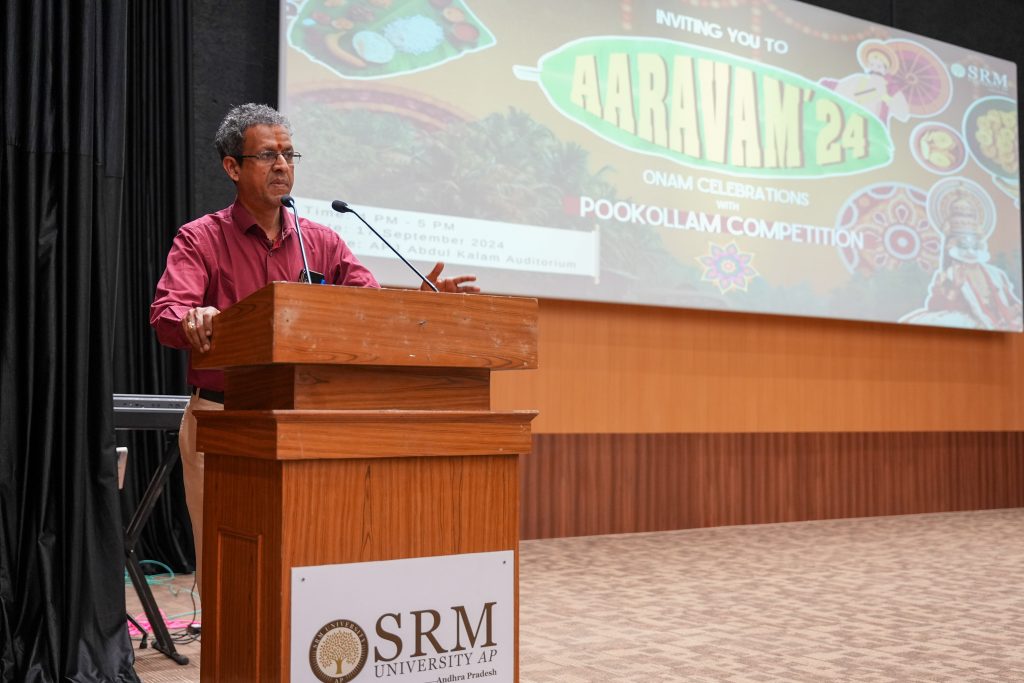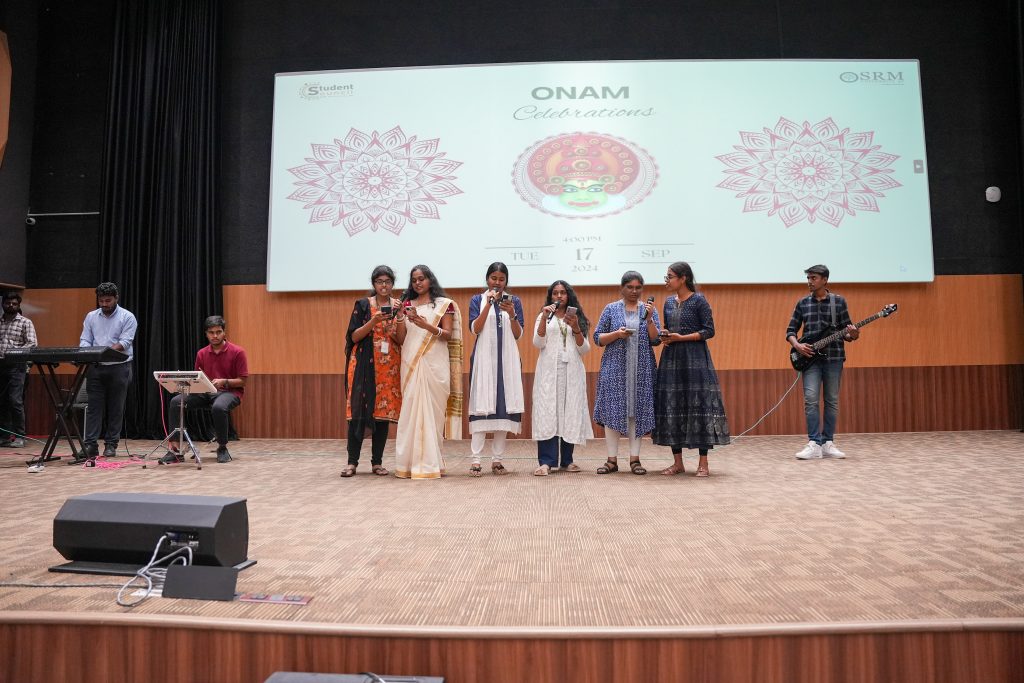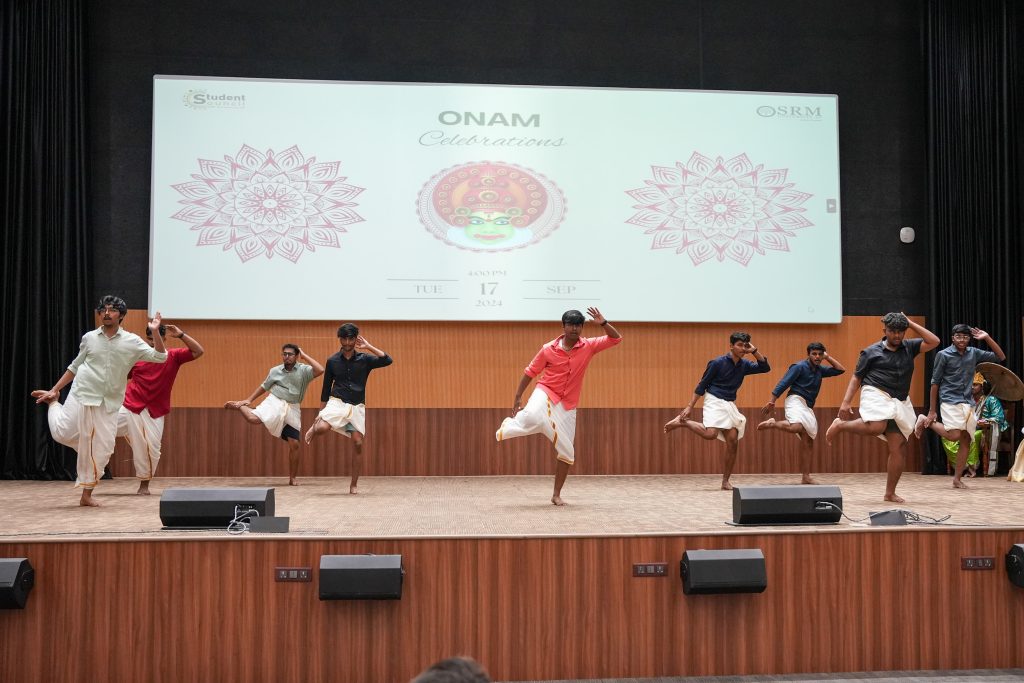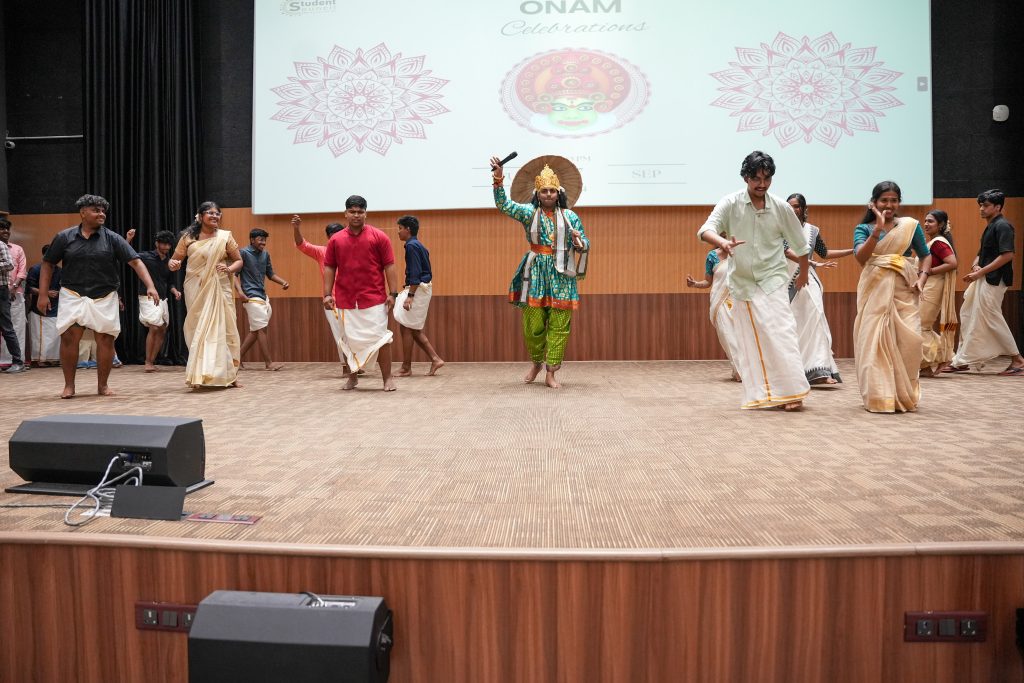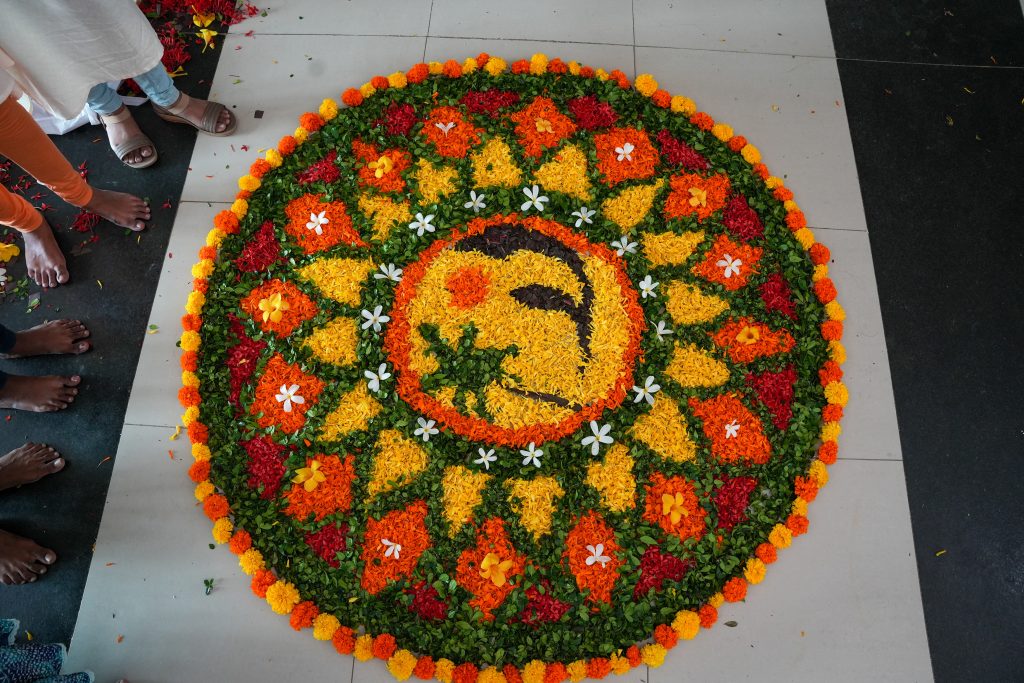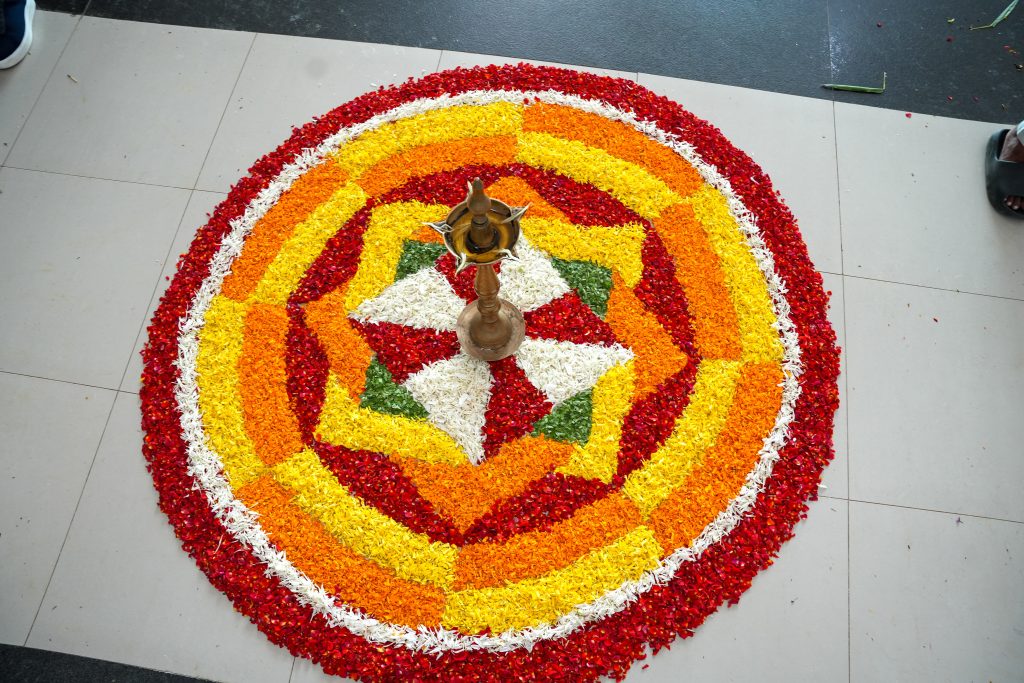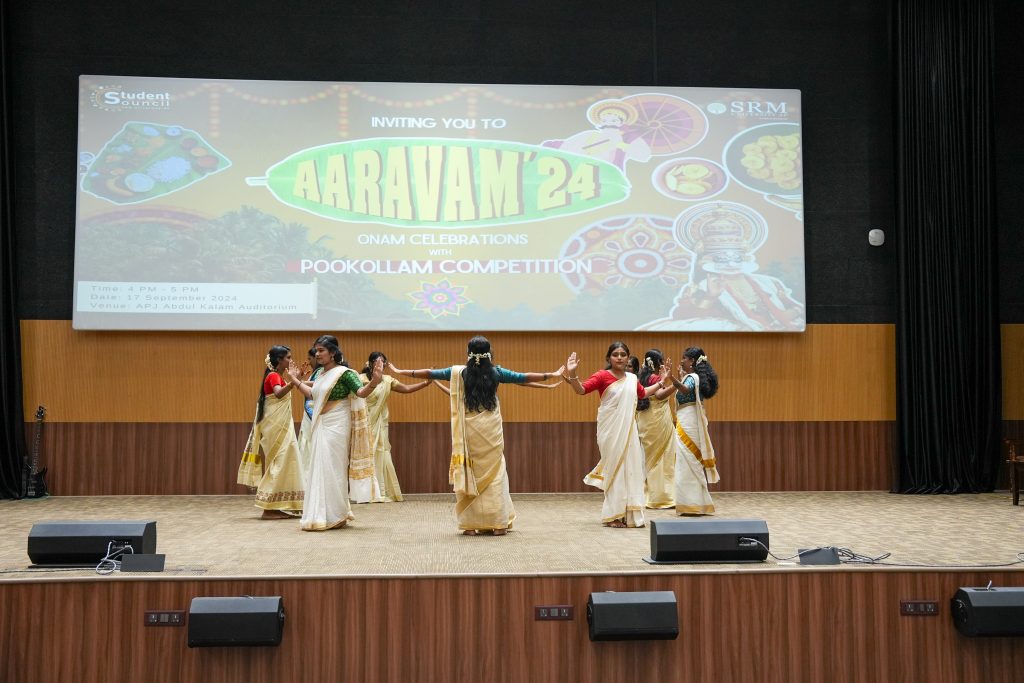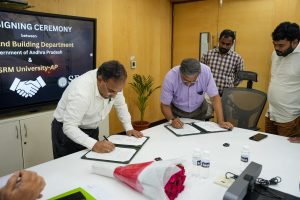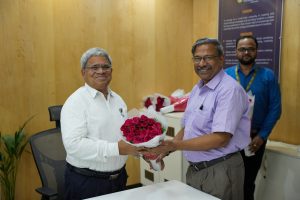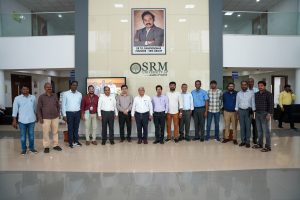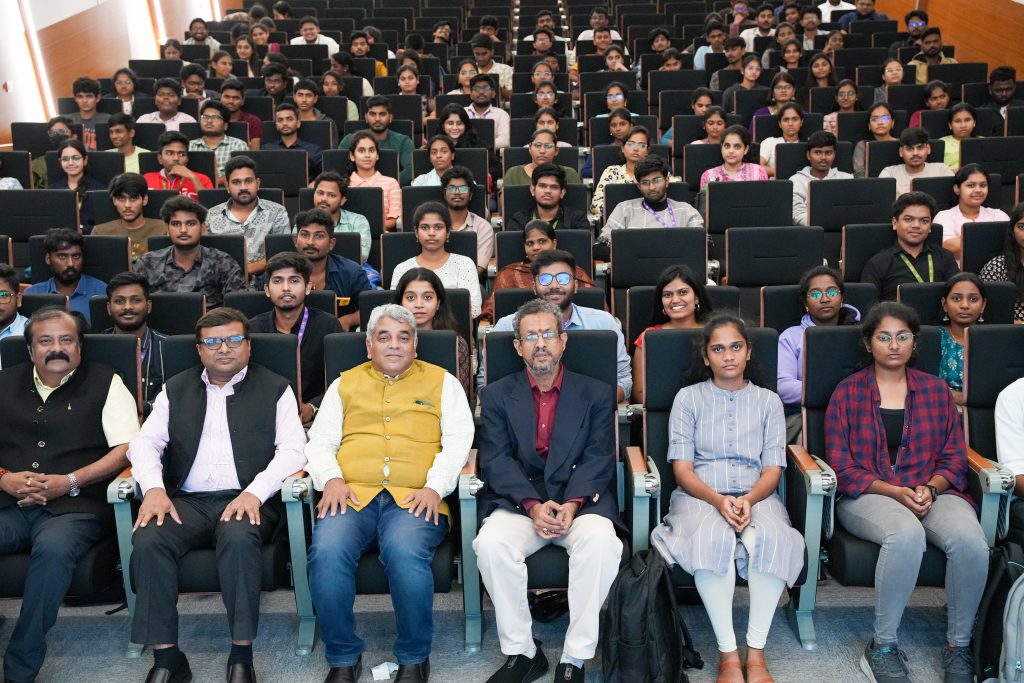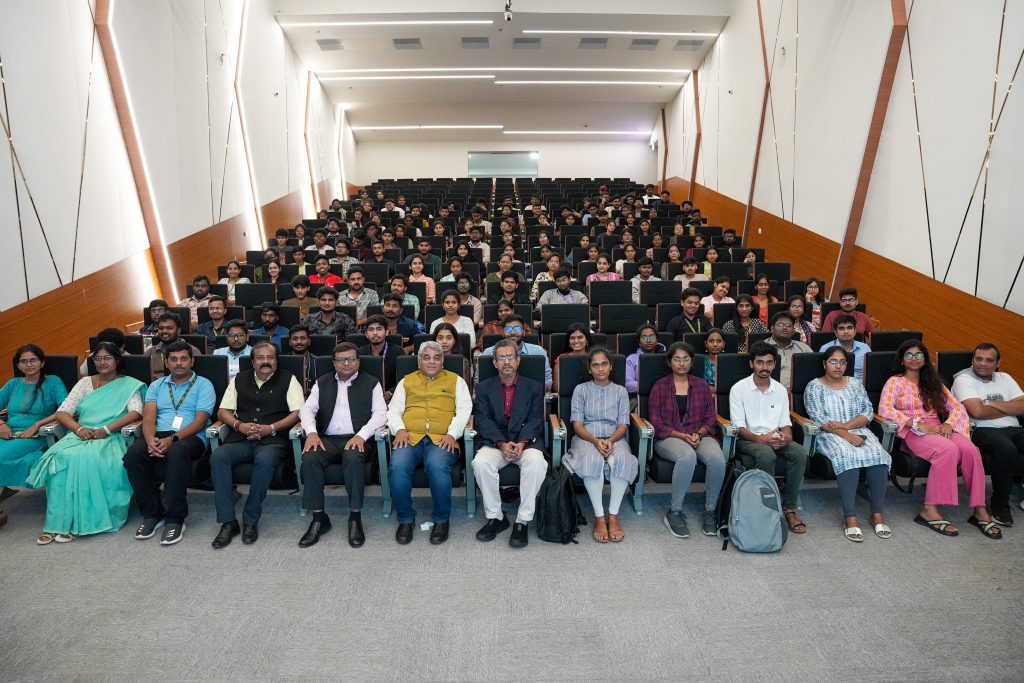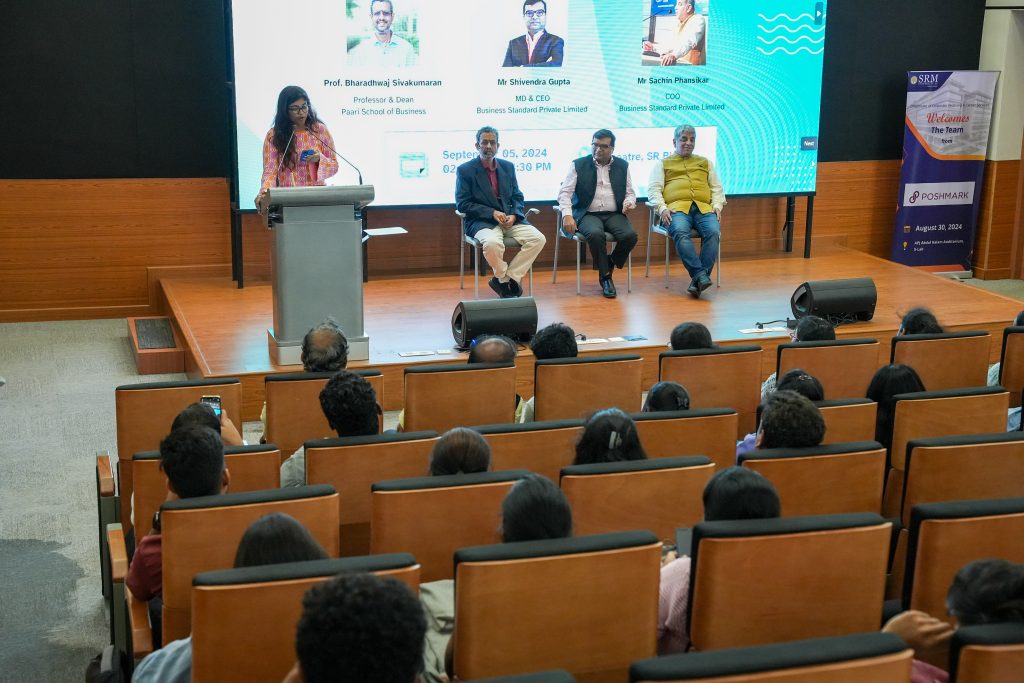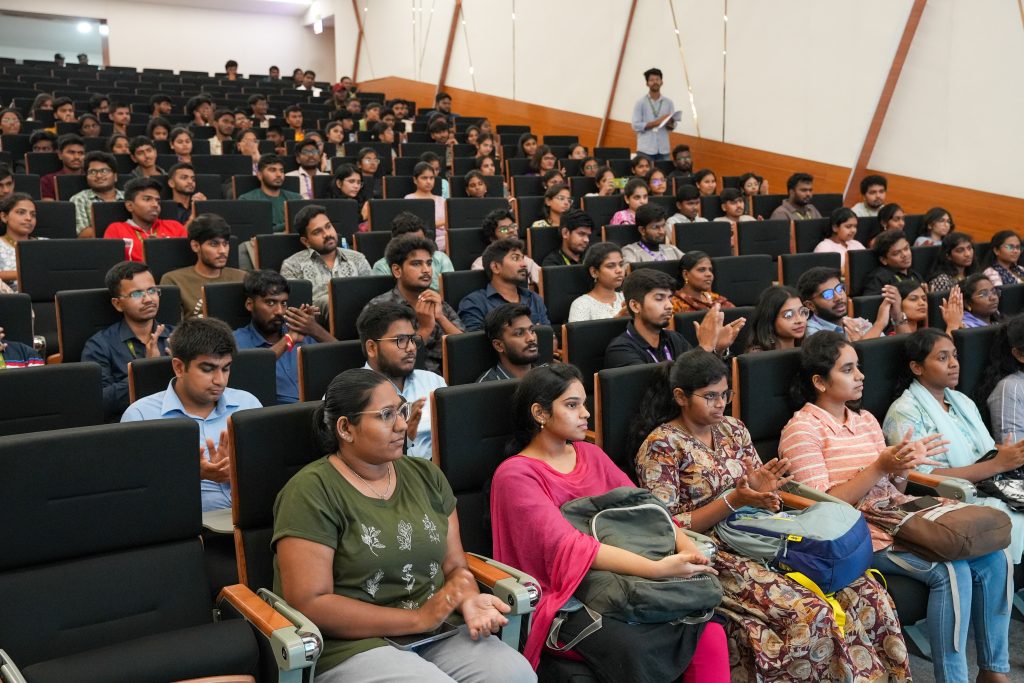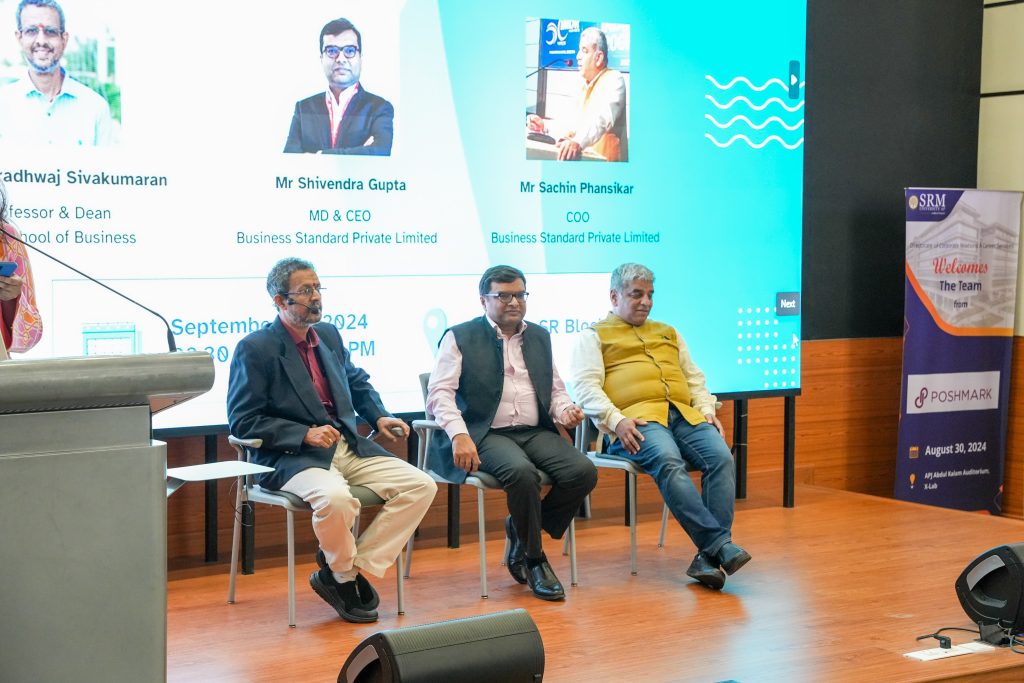Revisiting Clément Baloup’s Comics through Dr Gusain’s Research
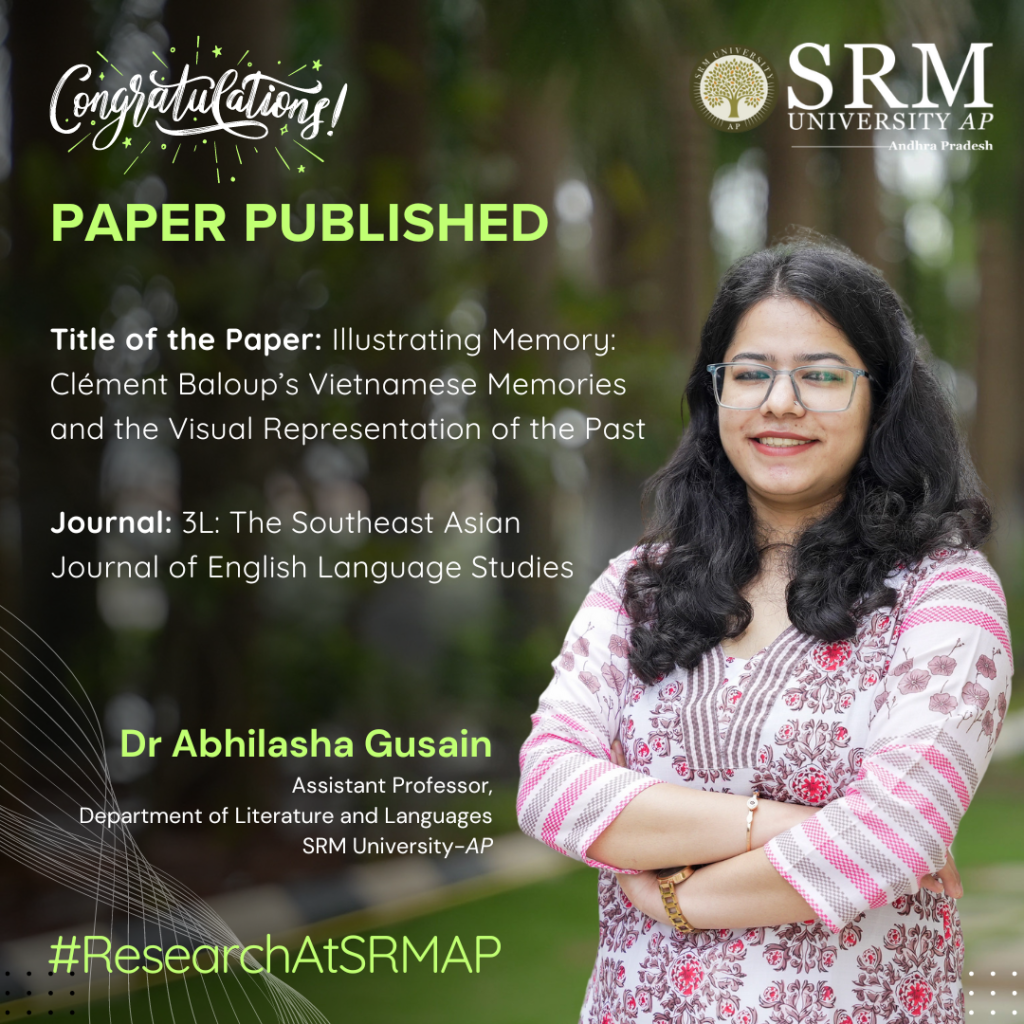
SRM University-AP is proud to announce that Dr Abhilasha Gusain, Assistant Professor in the Department of Literature and Languages has made an outstanding contribution to the academic world with her recent publication. Her research paper, “Illustrating Memory: Clément Baloup’s Vietnamese Memories and the Visual Representation of the Past,” featured in 3L: The Southeast Asian Journal of English Language Studies, a Q1-ranked journal known for its high impact in the field.
Abstract
The present study aims to highlight the role that Clément Baloup’s comics, Vietnamese Memories: Leaving Saigon (Volume 1) and Vietnamese Memories: Little Saigon (Volume 2), play in the creation of an alternate archive that validates the forgotten tales and the memories of a neglected past. These texts provide an alternate form of remembrance by materialising the past in the form of images. The two volumes present the unheard experiences of the Vietnamese diaspora that Baloup recorded during his travels to the different parts of France and the U.S. Such experiences bring to the forefront memories that are otherwise kept at the margins or suppressed by the dominant discourse. If not recorded, they will be lost forever. The counter-memory, thus, calls for a reassessment of the idea of a singular past that denies the marginalised memories. It claims representation and restoration in the cultural memory. As works of postmemory, these texts form a link between the past and the present through mediation and give memorability to unremembered accounts. The memories are illustrated, and hence, visual representation becomes important to the task of postmemory here.
Explanation of the Research:
This study emphasises the significance of visual representation in postmemory, showing how the two graphic narratives create a space for counter-memory and contribute to a reassessment of cultural memory by including marginalised experiences. Postmemory is a term used to describe how the memories of one generation are shaped by the stories and experiences of the previous generation. It often relates to events that people haven’t directly experienced, like wars or significant historical events, but feel a strong connection to through family stories, photographs, or cultural narratives. The paper illustrates how Baloup’s works serve as an alternate archival repository, creating a dynamic and inclusive cultural memory that reflects the complex, polyphonic nature of human experience; thus contributing significantly to the fields of comics studies and memory studies.
- Published in Departmental News, English Current Happenings, English news, News, Research News
Language Lab to Boost Student Communication Skills
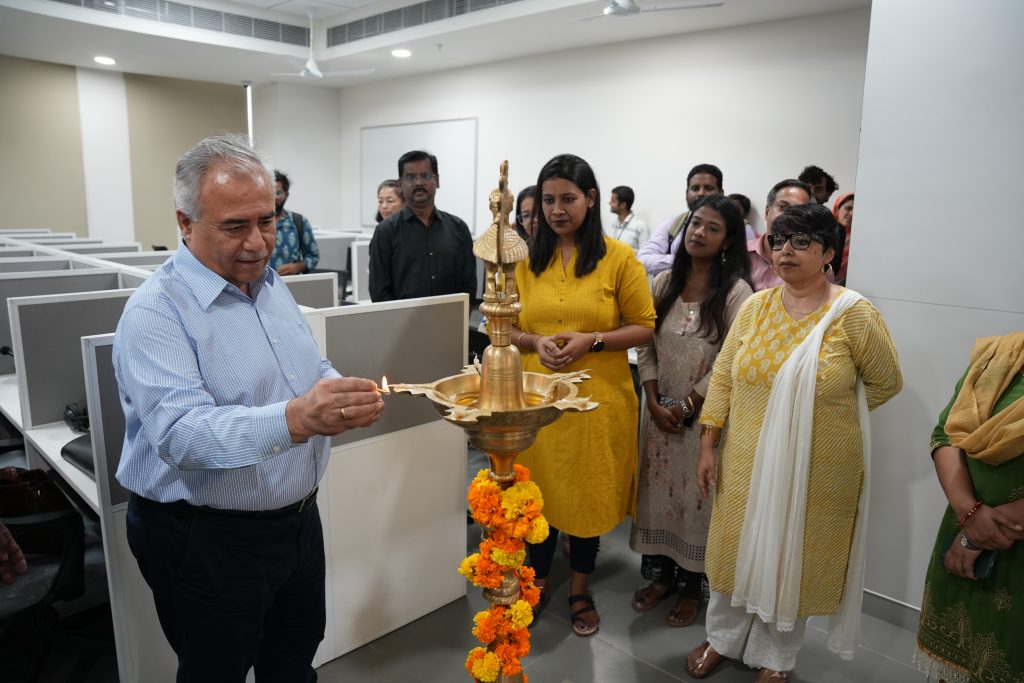 The Department of Literature and Languages at SRM University-AP celebrated the launch of its Language Lab, a state-of-the-art, 70-seater facility designed to enhance the Listening, Speaking, Reading, and Writing (LSRW) skills of its students.
The Department of Literature and Languages at SRM University-AP celebrated the launch of its Language Lab, a state-of-the-art, 70-seater facility designed to enhance the Listening, Speaking, Reading, and Writing (LSRW) skills of its students.
The inauguration was witnessed and officiated by the honourable Vice Chancellor, Prof. Manoj K Arora, along with Prof. Vishnupad, Dean- ESLA; Prof. C V Tomy, Dean-SEAS, Dr Vinayak Kalluri, Dean-Academic Affairs, Ms Suma N, CFAO; Dr Sayantan Thakur, Assistant Professor and Head; Dr Karthik Rajendran; Dr Srabani Basu, other faculty members, research scholars and students.
The laboratory, valued at 10 million rupees, is equipped with Sanako and Lanquill software, providing students with access to advanced resources. During the event, Vice Chancellor Prof. Manoj K Arora emphasised the value of communication he stated “Communication is an essential skill. With this lab, our students have a real opportunity to build those skills and contribute meaningfully to society.” he also voiced that, In future, the varsity will also be looking forward to opening this facility to the wider community so that more people can benefit from this resource.
Dr Thakur and Dr Amlan Baisya, Assistant Professors at the university, provided insights into the laboratory’s cutting-edge software and technology. They explained how these tools can significantly enhance the learning experience, making language acquisition more interactive and engaging. The faculty expressed their excitement about the opportunities this facility will create for both students and instructors alike.
Prof. Arora took a moment to commend the Department of Literature and Languages and the Directorate of Information Technology and Knowledge Management (ITKM) for their commitment to advancing education through innovative resources. He underscored the bright future ahead, not only for students but for the entire university community, as they leverage this new laboratory to improve communication skills that are vital in both academic and professional settings.
- Published in Departmental News, English Current Happenings, English news, News
Dr Sayantan’s Research Paper on Overcoming the Digital Divide
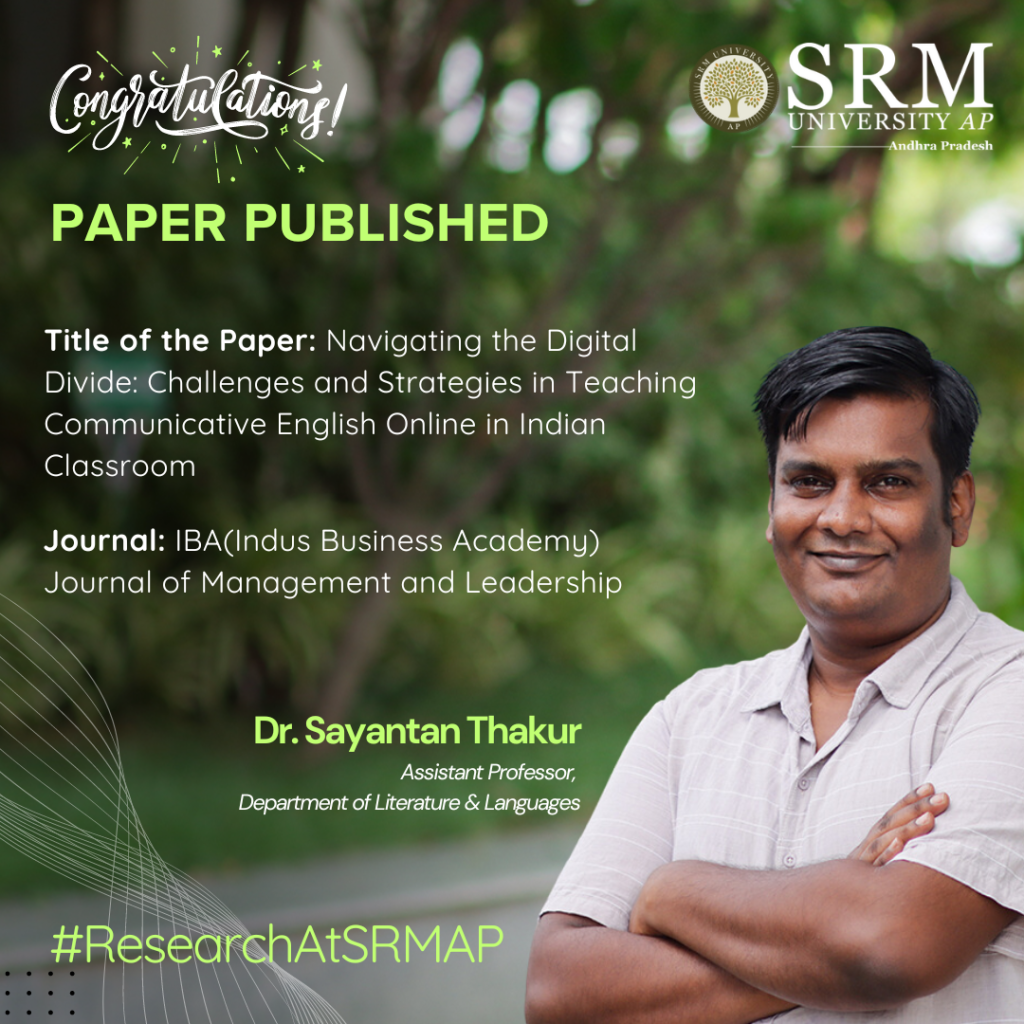
In the context of online English education in India, the “digital divide” has emerged as a significant obstacle, especially for students from rural or underprivileged areas. Dr Sayantan Thakur, Assistant Professor at the Department of Literature and Languages in his article introduces a research study titled “Navigating the Digital Divide: Challenges and Strategies in Teaching Communicative English Online in Indian Classrooms,” which aims to address the unequal access to online learning tools.
Abstract
The advent of online learning platforms is providing new opportunities for English language learning (ELL) in India. However, there is a significant challenge posed by the digital divide – the gap in accessing technology. This study investigates what causes the digital divide in internet ELL classrooms such as infrastructure limitations, device ownership and usage, and digital literacy skills; and how they affect student engagement, development of communication skills, and overall learning experiences. It suggests ways to bridge this gap which include government policies on infrastructure development; affordable tech solutions like mobile apps; teaching programs that enhance digital literacy among learners; support for teachers involved in web-based pedagogy. Through these recommendations, education stakeholders can create an inclusive cyberspace for all students where their communication abilities will be nurtured throughout different parts of India.
The Practical Implementation
The practical implementation of your research on “Navigating the Digital Divide: Challenges and Strategies in Teaching Communicative English Online in Indian Classrooms” has far-reaching social implications. By addressing the digital divide, your work can help level the playing field in education, especially for students from underprivileged backgrounds.
Improved Access to Education: Implementing strategies like infrastructure development, affordable mobile-based learning tools, and digital literacy programmes can provide more students, especially in rural and low-income areas, access to online English learning resources. This improves their chances of acquiring essential communication skills, opening doors to better job opportunities.
Empowering Teachers: Equipping teachers with digital tools and training enables them to deliver more effective online lessons, increasing student engagement and success rates.
Reducing Inequality: Bridging the technology gap can reduce educational disparities between urban and rural areas, promoting social mobility and reducing the long-term impacts of inequality.
Building a Digitally Literate Society: Enhancing digital literacy among students and teachers fosters a society better prepared for the demands of the modern workforce, ultimately contributing to economic growth and social inclusion.
Future Research Plans
- Regional Literature in Translation
- Tantric Tradition and Eastern Indian Literature
- Folk Music of Bengal
- Indian Philosophy, Aesthetics & Literature
- Published in Departmental News, English Current Happenings, English news, News, Research News
Marketing Wizard Delivers Lecture on D2C Marketing
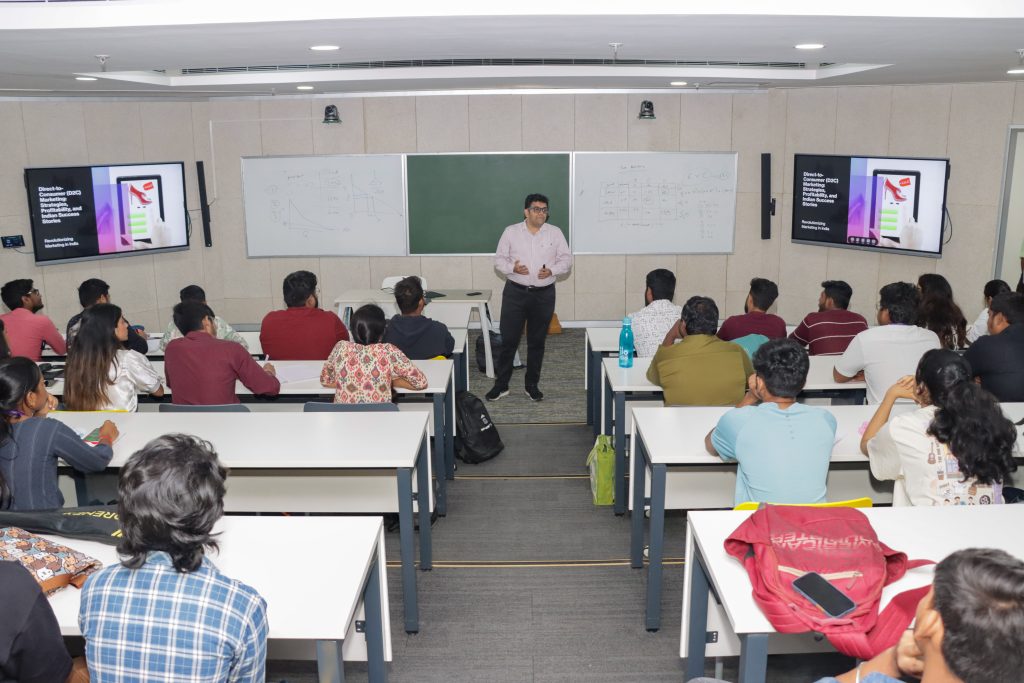 The students of Paari School of Business (PSB) had a memorable experience when Mr Siddesh Joglekar joined as a guest lecturer at SRM University-AP. The CRCS team’s dedicated efforts and the unwavering support of Prof. Bharadwaj Sivakumaran, Dean of PSB, made this unique opportunity possible. Students had the privilege of engaging in a personal interaction with the esteemed guest on September 18, 2024.
The students of Paari School of Business (PSB) had a memorable experience when Mr Siddesh Joglekar joined as a guest lecturer at SRM University-AP. The CRCS team’s dedicated efforts and the unwavering support of Prof. Bharadwaj Sivakumaran, Dean of PSB, made this unique opportunity possible. Students had the privilege of engaging in a personal interaction with the esteemed guest on September 18, 2024.
During the lecture Mr Joglekar shed light on various aspects of professional growth and marketing strategies. He placed significant emphasis on the need to foster a collaborative environment and recognising the contributions of peers.The lecture also delved into the imporatance of networking for career advancement, especially through ones’ Alumni Associations
Mr Joglekar delved into the expansive potential of Direct to Consumer (D2C) marketing, using examples from renowned companies like Twitter, Walmart, Instagram, Zomato, Amazon, Tesla, and Google to illustrate the evolution of brand images. A poignant quote from Mr Joglekar, “Companies are transformed into brands by people who dare to dream,” encapsulated the essence of the discussion, emphasising the role of visionary individuals in shaping successful brands.
Interactive elements were woven into the session, including an activity where students were tasked with creating logos that branded themselves, thus reflecting a unique aspect of their identity. This hands-on approach not only made the learning process engaging but also provided practical insights into branding.
A comparative analysis between traditional retail and D2C highlighted key differences such as distribution channels, pricing strategies, and brand control, offering a deeper understanding of the contemporary marketing landscape. The concepts of Customer Acquisition Cost (CAC) and Life-Time Value (LTV) were also explored, underscoring their importance in building a strong brand identity.
As the session neared its conclusion, Mr Joglekar introduced an innovative activity that involved reverse engineering an advertisement concept, inspired by the 2022 ad campaign featuring Mr Neeraj Chopra for Cred. This exercise prompted students to think creatively and apply the concepts discussed in a practical context.
The session wrapped up with a Q&A segment, where discussions ranged from market profitability to the advantages of D2C marketing, allowing for a comprehensive review of the topics covered. Ms Andrea Benedict extended a vote of thanks on behalf of the student fraternity of PSB, culminating in a group photo session that captured the essence of the enriching experience.
- Published in Departmental News, News, Paari Current Happenings, paari-guest-lectures
AARAVAM 2024 Concludes with a Bang!
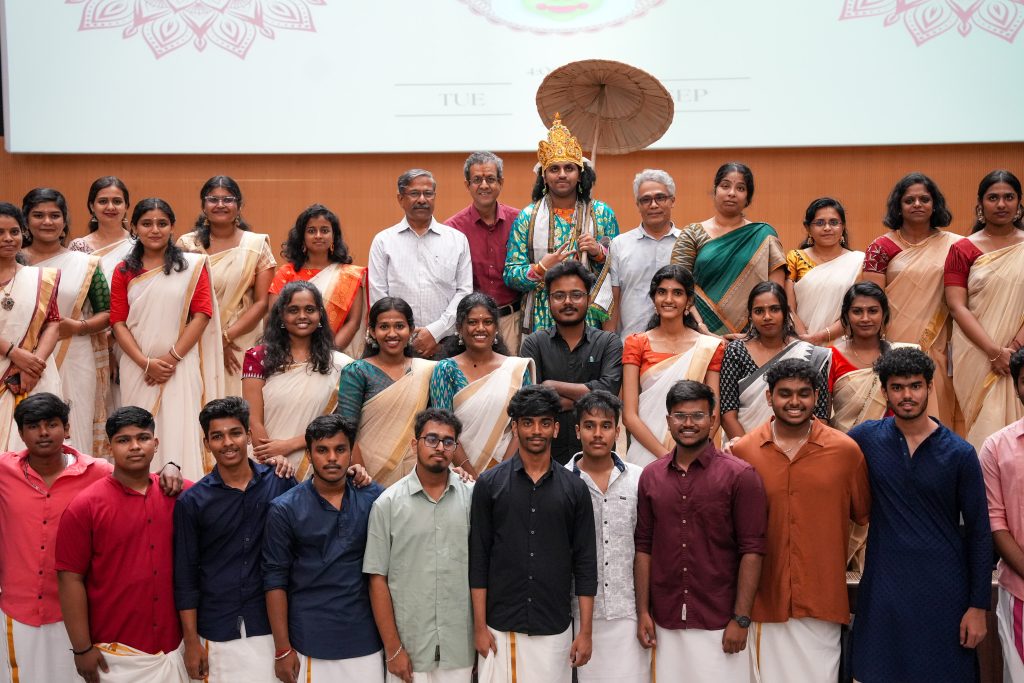 Unity in diversity is more than just a saying at SRM University-AP; it’s the heart and soul of our campus. With over 6000+ students from various states and union territories and an international diversity representing 24 countries each festival serves as a bridge, drawing a closer bond amongst all. The Onam celebration, Aaravam 2024, on campus was no different, the varsity celebrated Onam on September 17, 2024.
Unity in diversity is more than just a saying at SRM University-AP; it’s the heart and soul of our campus. With over 6000+ students from various states and union territories and an international diversity representing 24 countries each festival serves as a bridge, drawing a closer bond amongst all. The Onam celebration, Aaravam 2024, on campus was no different, the varsity celebrated Onam on September 17, 2024.
The celebration orchestrated by the Directorate of Student Affairs oversaw the decoration and resplendent showcase of the Kerala culture through dance and music. The festivities commenced with the traditional Thiruvathirakali, a dance that saw students gracefully attired in the Kerala Kasavu saree, enhancing the aesthetic appeal of the day, followed by an array of cultural performances that captivated the audience. The highlight of the celebration was the appetising Onam payasam, which brought in the sweetness of the festival itself.
The appearance of King Mahabali brought a wave of joy among us all. In a heartwarming gesture, our Kerala community shared a captivating video that told the story of Onam, welcoming everyone to partake in the tradition, truly reflecting SRM AP‘s embrace of diverse cultures.
The event was graced by the presence of Registrar Dr R Premkumar, the Deans of the three schools, and King Mahabali himself, along with our faculty, staff and students. It was a day that drew us all closer, celebrating Kerala’s rich cultural tapestry. More than just a celebration, it was a reminder of the beauty in our diversity and the strength in our unity.
- Published in Departmental News, News, student affairs news
SRM AP Forges Partnership for Pavement Engineering
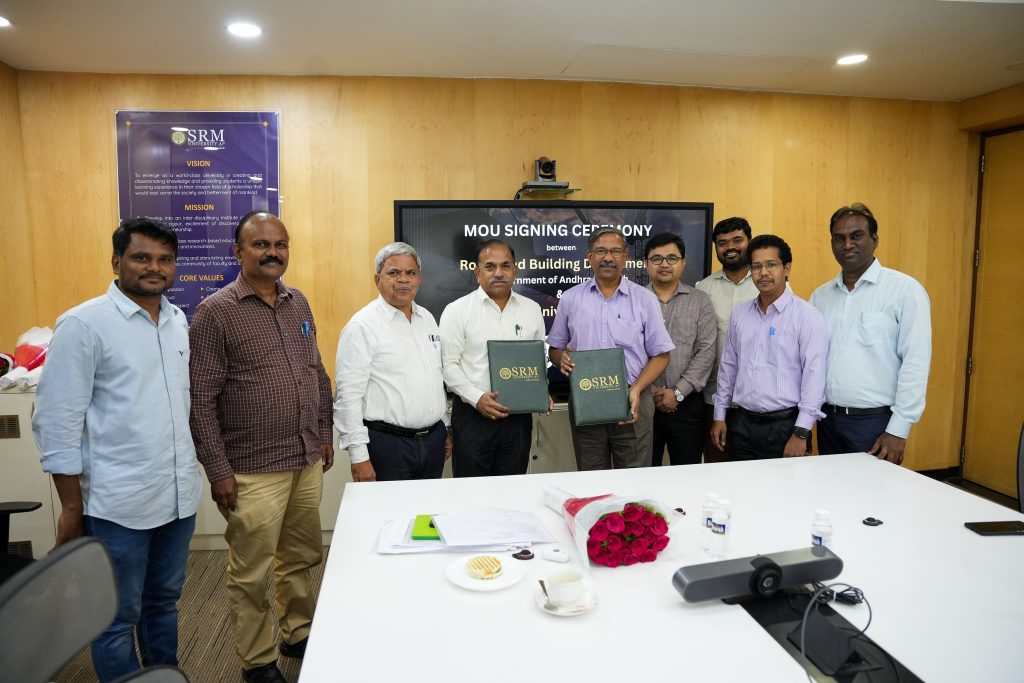
In a historic event, SRM University-AP and the Department of Road and Buildings (R&B), Government of Andhra Pradesh, signed a Memorandum of Understanding. The MoU was signed for Research, Academic and Scientific Knowledge Exchange in the field of Pavement Engineering and its allied areas.
The signing ceremony was formally executed by Dr R Premkumar, Registrar of SRM University-AP, and Sri L Srinivasa Reddy, Chief Engineer (Roads & Buildings) SH&MD, Andhra Pradesh Road Development Corporation. This significant event was witnessed by Mr K Nayeemullah, the Engineer-in-Chief (Roads & Buildings), alongside Prof. Ranjit Thapa, the Dean of Research; Dr Raviteja KVNS, the Department Head; Dr GVP Bhagat Singh, Associate Professor; Dr Uma Maheswar Arepalli, Assistant Professor; and other distinguished members of the faculty.
The collaboration poised to enhance bilateral engagement in research, pilot initiatives, and capacity-building efforts, will also foster student upskilling and reskilling through seminars, workshops, symposia, guest lectures, and co-mentorship in academic endeavours and enable them to perform better on the industrial front.
Speaking on the occasion, Registrar Dr R Premkumar stated, “This MoU serves one of the university’s goals, wherein we concentrate on positioning the university as a globally connected and regionally transformative institution of excellence.” He added that nobody is better suited than the faculty and students of SRM AP to come up with effective and affordable solutions to the problems we ourselves encounter.
“The MoU offers manifold benefits, it will enable government engineers to come and train the students and will provide them with first-hand experience in solving problems that are regional to this place”, said Mr K Nayeemullah, Engineer-in-Chief (R&B).
Dr Uma Maheswar Arepalli, Assistant Professor at the Department of Civil Engineering, SRM AP, in his statement, mentioned that the university is actively engaged in implementing the pilot study programme focused on researching cost-effective technology solutions aimed at addressing the issue of potholes across the state of Andhra Pradesh. He further stated that their team is in the process of organising a workshop aimed at raising awareness and fostering discussions on innovative approaches to infrastructure maintenance and improvement.
The MoU also aims to complement the varsity in its research endeavours by performing pilot studies and exploring new technologies including laboratory and field investigations. “The MoU will help actualise the concept of Atmanirbhar Bharat, which will only succeed if universities like SRM AP commit to providing cost-effective and real-time solutions for the betterment of society,” stated Mr Srinivasa Reddy, Chief Engineer (R&B) SH & MD APRDC.
- Published in CIVIL NEWS, Departmental News, MoU, News
SMAFS Technology Gets Patented
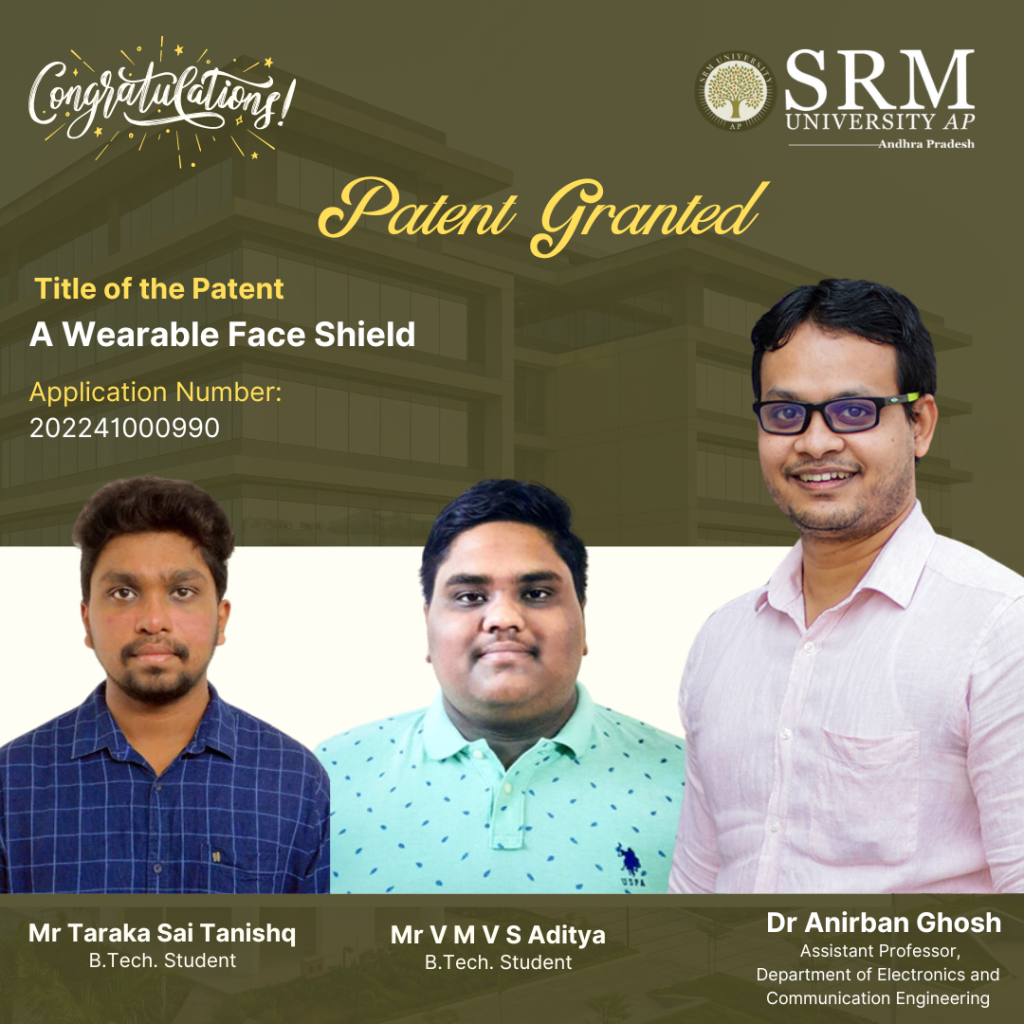
Dr Anirban Ghosh and his BTech students, Mr Taraka Sai Tanishq Chebrolu and Mr V.M.V.S. Aditya from his department, have come up with a pathbreaking innovation where a Smart Face Shield (SMAFS) helps detect a virus and reminds the wearer to maintain a safe distance. This innovation, patented under the Indian Patent Office Journal, with application number-202241000990 , marks a milestone step towards public health and safety.
Abstract:
The recent spurt of corona virus has wreaked havoc across the globe and led to huge loss of human lives. An intelligent system with innovative technologies can be implemented to address the rapid spread of the deadly virus. The wearable face shield that can not only help to maintain appropriate social distancing in a crowded place but also to identify a person with preliminary symptoms of corona virus. It is designed as a technically improved face shield to maintain social distancing by appropriate use of proximity sensor and to measure temperature of the wearer by using contact temperature sensor. LED’s and buzzer are placed strategically to alert people via visual and audio signals respectively. Such precautionary detection and proximity alert prototype can prove instrumental in early diagnosis and isolation aiding in crowd management and free movement in places of social gathering.
Practical Implementation of the Patent:
Such precautionary detection and proximity alert prototype can prove instrumental in early diagnosis and isolation aiding in crowd management and free movement in places of social gathering. Hence, wearable face shield ensures adequate separation between persons and facilitates temperature monitoring and early disease detection.
Future Research Plans:
Future research plans are to further improve the capability of the existing prototype for example integration of oxygen saturation measurement, Heartbeat, Blood pleasure, Temperature, Location, etc of the user. In the event of an emergency or critical drop in any of the vitals, the system can automatically alert the local hospital, ambulance service, and relatives.
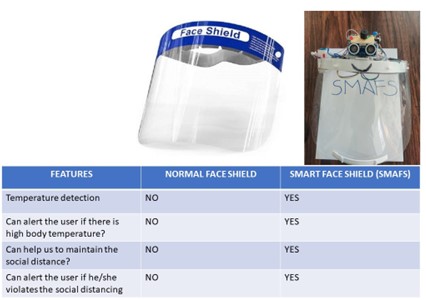
- Published in CSE NEWS, Departmental News, ECE NEWS, News, Research News
From Concept to Reality: The Promising Future of AlN-GDC-HEMT in Electronics
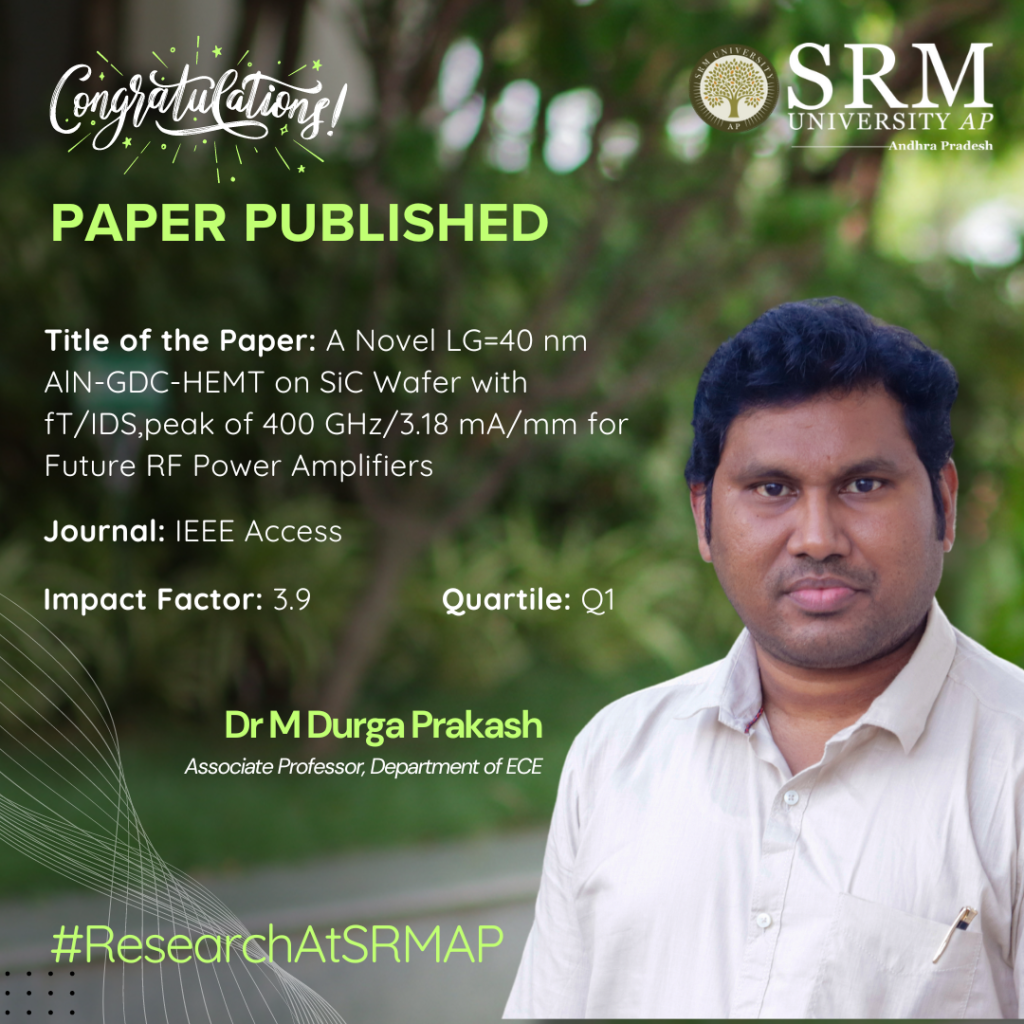
The Department of Electronics and Communication Engineering, SRM University-AP, is pleased to announce that Assistant Professor Dr Durga Prakash has published a noteworthy research paper titled “A Novel LG=40 nm AlN-GDC-HEMT on SiC Wafer with fT/IDS,peak of 400 GHz/3.18 mA/mm for Future RF Power Amplifiers.” This accomplishment reflects Dr Durga Prakash’s expertise and dedication to advancing research in the field and further enriching the academic contributions of the varsity.
Abstract:
This study presents the initial RF/DC performance of innovative AlN/GaN/Graded-AlGaN/GaN double-channel HEMT (AlN-GDC-HEMT) on SiC wafer. Traditional AlGaN/GaN/Graded-AlGaN/GaN double-channel HEMTs (AlGaN-GDC-HEMT) and the AlN-GDC-HEMT are compared. Both devices form two quantum wells, resulting in prominent double peaks in transconductance and cut-off frequency graphs, demonstrating efficient inter-channel communication. AlN-GDC-HEMT and AlGaN-GDC-HEMT are compared based on gate recess length (LR) and top barrier thickness. Gate lengths (LG) are also used to study HEMT scaling. Additionally, gate engineering and lateral scaling affect both devices’ DC/RF behaviour. Based on rigorous comparison investigation, the AlN-GDC-HEMT outperforms the AlGaN-GDC-HEMT due to its higher polarization (spontaneous) density and larger bandgap. The optimized AlN-GDC-HEMT with LG = 40 nm, LGS = 250 nm, and LGD = 400 nm has high performance, with transconductance (GM) values of 203.1 and 787.5 mS/mm at two peaks, IDS_peak of 1.97 A/mm, IDS_sat of 3.18 A/mm, and the highest fT of 285.1 and 416.8 GHz from the left and right peaks First-stage results suggest AlN-GDC-HEMTs could be used in future RF power amplifiers.
Practical & Social Implications of the Research:
It can be concluded that the AlN-GDC-HEMT that has been proposed is extremely promising, as it possesses remarkable performance and is appealing for power microwave GaN-based HEMT production. This highlights the fact that it is suitable for a broad variety of high-performance applications.
Collaborations:
Department of ECE, Faculty of Science and Technology (IcfaiTech), ICFAI Foundation for Higher Education Hyderabad, Hyderabad-501203, India.
Future Research Plans:
Novel semiconductor device development
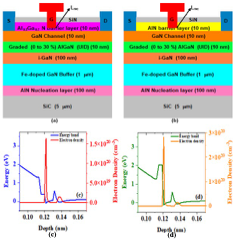
- Published in Departmental News, ECE NEWS, News, Research News
Dr Barman Decodes the Mysteries of the Universe
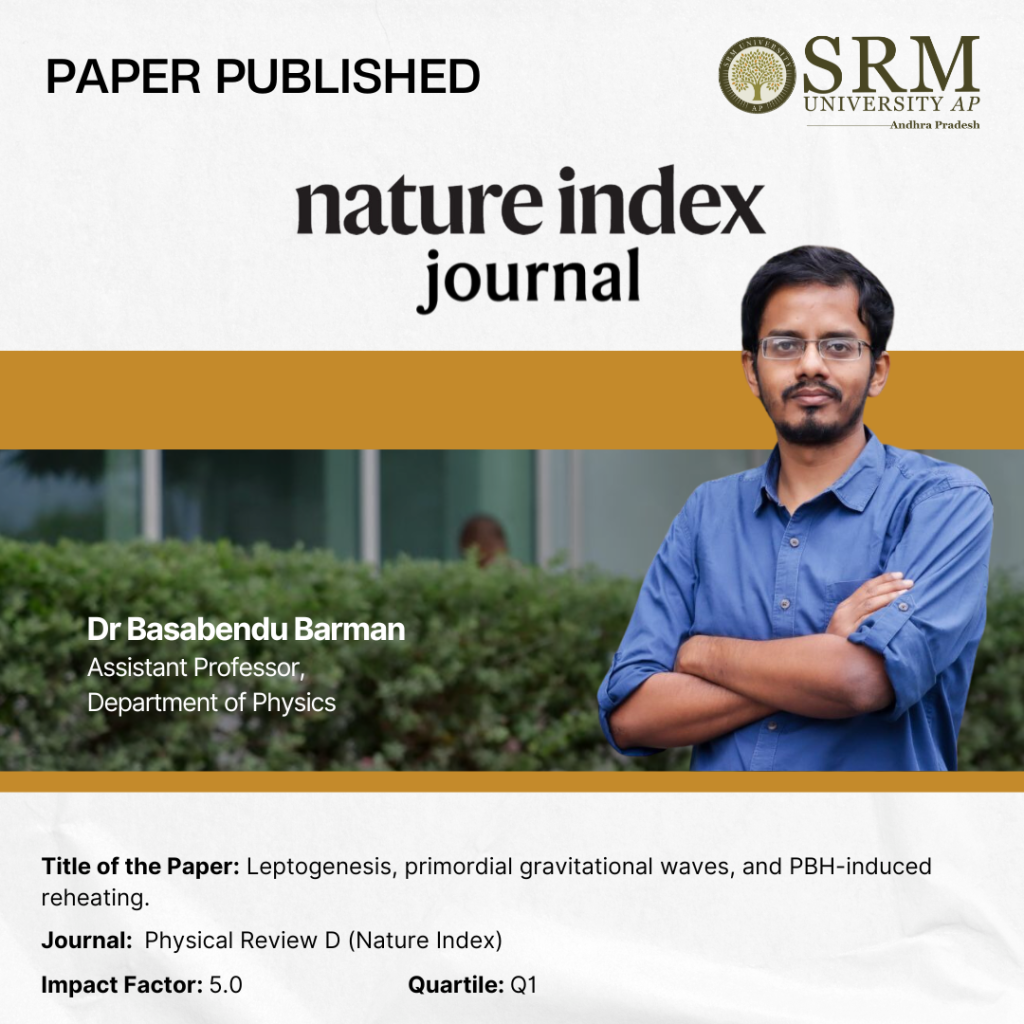
Ever wondered how the universe came into existence? The component with which matter and antimatter were formed? Dr Basabendu Barman, Assistant Professor at the Department of Physics, in his research paper, titled- Leptogenesis, Primordial Gravitational Waves, and PBH-induced Reheating delves into the truth of the formation of matter. Read this exciting paper featured in Physics Review D to learn more!
Abstract:
We explore the possibility of producing the observed matter-antimatter asymmetry of the Universe uniquely from the evaporation of primordial black holes (PBH) that are formed in an inflaton-dominated background. We show it is possible to obtain the desired baryon asymmetry via vanilla leptogenesis from evaporating PBHs of initial mass around 10g. We find that the allowed parameter space is heavily dependent on the shape of the inflaton potential during reheating, the energy density of PBHs, and the nature of the coupling between the inflaton and the Standard Model (SM). To complete the minimal gravitational framework, we also include in our analysis the gravitational leptogenesis set-up through inflaton scattering via exchange of graviton, which opens up an even larger window for PBH mass, depending on the background equation of state. We finally illustrate that such gravitational leptogenesis scenarios can be tested with upcoming gravitational wave (GW) detectors, courtesy of the blue-tilted primordial GW with inflationary origin, thus paving a way to probe a PBH-induced reheating together with leptogenesis.
Practical Implementations & Social Impact:
The first implication lies in the realm of intellect. The question, “Why is the Universe the way it is?” is profoundly significant and has likely intrigued humanity since the dawn of civilization. While technological advancements have allowed us to unravel many of the Universe’s mysteries, we have also come to realize that “what we know is a drop, and what we don’t know is an ocean.” As theoretical particle physicists, our role is to explore this vast ocean of the unknown—a pursuit for which we are rigorously trained. This underscores the vital importance of studying fundamental science. From a practical perspective, our study highlights the crucial role that experiments play in uncovering new knowledge. The synergy between theory and experiment, as we propose, could soon lead to groundbreaking discoveries—or, alternatively, our theory could be disproven if no evidence is found. Either way, it is essential to have advanced experimental facilities and more sensitive detectors to carry out these investigations. This, in turn, calls for increased funding and support for research in the field of high-energy physics.
Collaborations:
India (IIT: Guwahati, Kanpur, Hyderabad; IACS, Kolkata; IOP, Bhubaneswar).
Colombia (Universidad de Antioquia, Universidad de Santiago de Chile).
Abu Dhabi (New York University, Abu Dhabi).
Brazil (IIP, Natal).
Germany (Mainz Institute for Theoretical Physics [MITP], Mainz).
Poland (University of Warsaw).
Spain (Universidad Complutense,Madrid; IFIC, Valencia).
China (T D Lee Institute).
Korea (IBS, Daejeon; KIAS, Seoul; Kyungpook National University, Daegu).
Japan (Hokkaido Univeristy).
France (IJC Lab, Paris).
Sweden (KTH, Stockholm)
US (Washington University, St. Louis; University of Minnesota; Indiana University; University of Pittsburgh, University of Kentucky).
Future Plans:
A closer look into early universe dynamics by performing more involved simulations.Connection between particle physics models and early Universe cosmology.Complementary searches from different experiments in unravelling new physics beyond the Standard Model.
Link: https://journals.aps.org/prd/abstract/10.1103/PhysRevD.110.043528

- Published in Departmental News, News, Research News
Leadership Insights: Navigating the Future with Paari School of Business
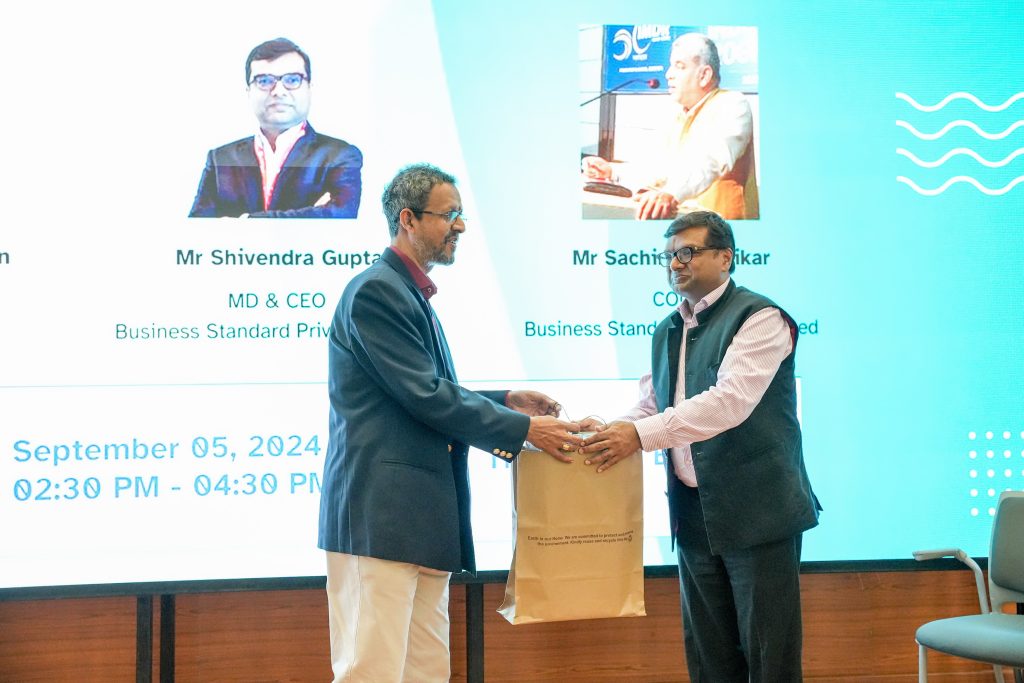 Paari School of Business’s “Insights and Perspectives” initiative featured an interactive discussion with three domain experts: Prof. Bharadhwaj Sivakumaran, Dean of PSB; Mr Shivendra Gupta, MD & CEO of Business Standard Private Ltd; and Mr Sachin Phaniskar, Chief Operating Officer of Business Standard Private Ltd, engaging with luminaries.
Paari School of Business’s “Insights and Perspectives” initiative featured an interactive discussion with three domain experts: Prof. Bharadhwaj Sivakumaran, Dean of PSB; Mr Shivendra Gupta, MD & CEO of Business Standard Private Ltd; and Mr Sachin Phaniskar, Chief Operating Officer of Business Standard Private Ltd, engaging with luminaries.
The event aimed to offer practical leadership guidance and valuable insights for professional development from experienced personnel in the academic and corporate sectors. The initiative facilitated discussions with prominent figures to emphasise the importance of improving decision-making skills, interpersonal abilities, and technological proficiency. Participants were urged to seize opportunities for growth, leverage their strengths, work on areas needing improvement, and adopt a forward-thinking mindset. Additionally, the conversation highlighted key leadership principles, including effective delegation, creating a lasting impact, and turning challenges into strategic advantages.
Participants were also encouraged to focus on long-term goals, experience the complete lifecycle of projects, and understand the value of delegation and legacy-building in leadership. The conversation highlighted key themes such as turning challenges into opportunities, understanding the difference between ideation and business execution, and the importance of humility in achieving success. Overall, the event provided attendees with practical takeaways to apply in their leadership journey and a deeper understanding of the evolving demands in today’s business landscape.
- Published in Departmental News, News, Paari Current Happenings


